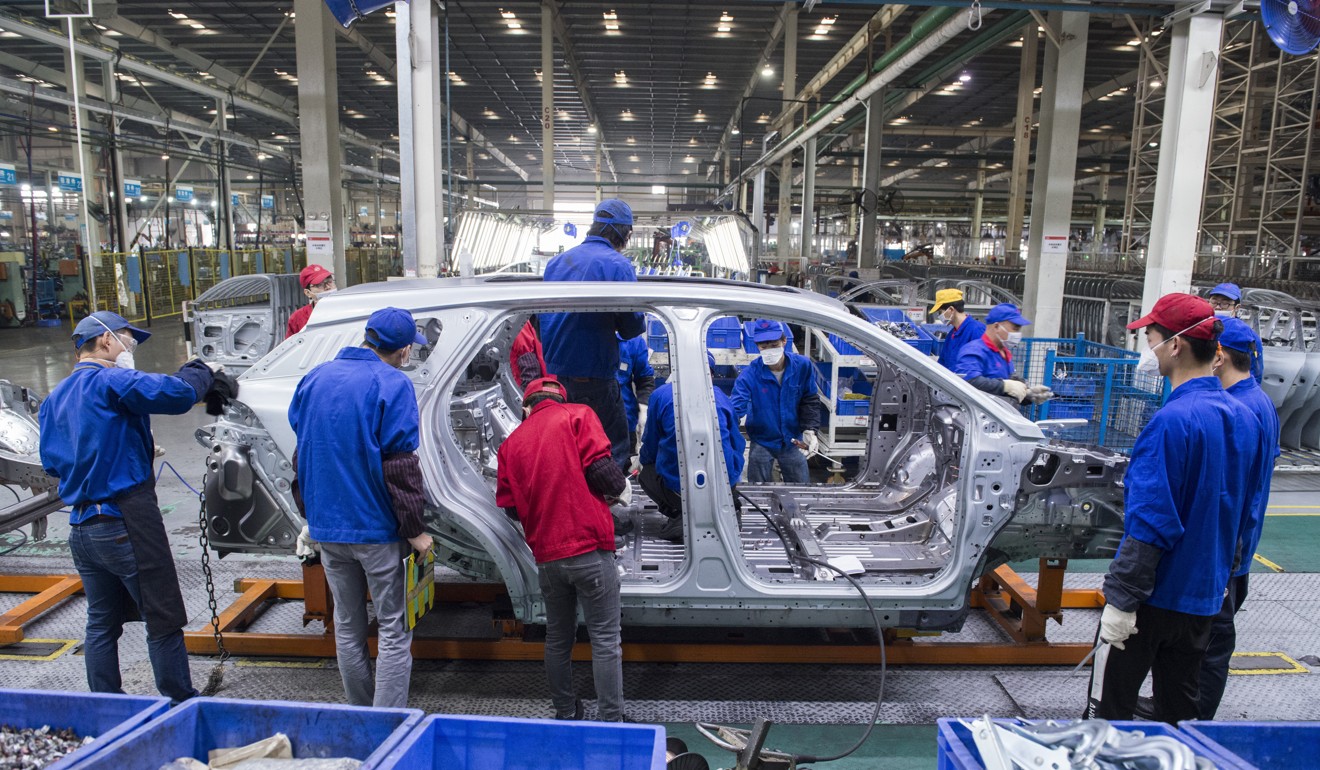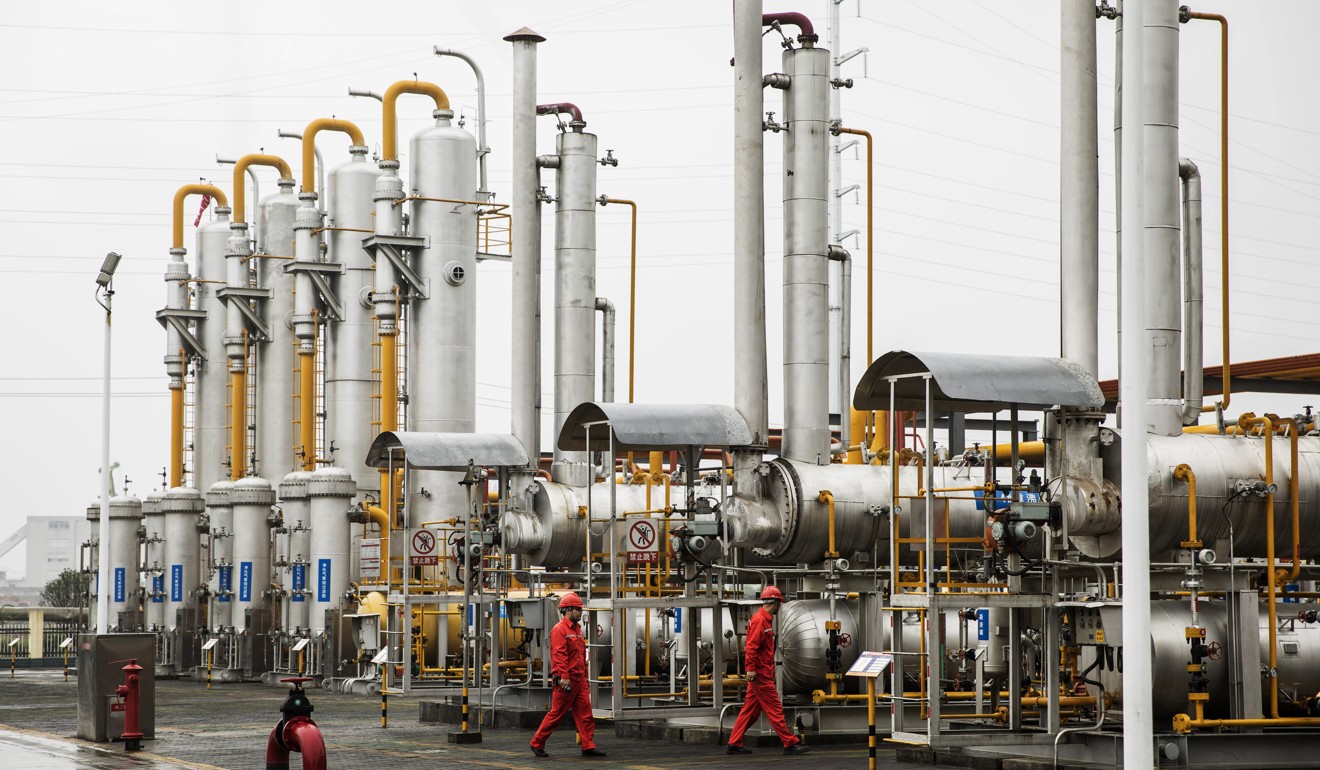
Trade war fears and low demand sees profit growth at China’s industrial giants cut in half
- Industrial profit growth falls for eight consecutive months since April, dragging the full-year growth down to 10.3 per cent, compared to 21 per cent in 2017
- December’s industrial profits also fell 1.9 per cent from a year earlier, the worst monthly performance since 2015
China’s industrial companies saw their profit growth scythed in half last year, as economic activity cooled in the world’s second largest economy.
Industrial profits growth has now fallen for eight consecutive months since April, dragging the full-year growth down to 10.3 per cent, compared to 21 per cent in 2017, according to data released by the National Bureau of Statistics (NBS) on Monday.
December’s industrial profits also fell 1.9 per cent from a year earlier, the worst monthly performance since the end of 2015, and the second consecutive monthly decline.
The decline was partly due to slow growth of the producer price index for industrial products (PPI), also known as the factory gate price, indicating weak demand for industrial goods. In December, PPI grew only 0.9 per cent from a year earlier. Month by month, PPI was down 1 per cent from November.
The data track profits from firms that report more than 20 million yuan (US$2.96 million) in revenue from their main business. At the end of last year, industrial firms reported profits of 680.8 billion yuan (US$100.75 billion) for December and 6.63 trillion yuan (US$982 billion) for the whole year.

Within this, state-controlled firms saw their profits up 12.6 per cent to 1.85 trillion yuan last year. Private companies’ profits rose 11.9 per cent to 1.71 trillion yuan (US$253 billion), while profits for companies with overseas investments grew by just 1.9 per cent to 1.67 trillion yuan.
Earlier figures released by the State-owned Assets Supervision and Administration Commission of the State Council (SASAC), the government body that manages state-owned assets, shows that the profit gap between state and private companies is widening.
Last year, firms owned by the central government, the biggest of all state-owned enterprises, booked record-high net profits of 1.2 trillion yuan, a rise of 15.7 per cent from the previous year, according to SASAC.
Over the past few months, the Chinese government has been trying to channel more support to private companies by encouraging banks to increase lending to small and micro enterprises.
However, some small business owners have told the Post that they do not need access to loans, as business expansion was not on the agenda, with the economy slowing. Instead, they said, tax cuts would be more appropriate.
The five most profitable industries according to the NBS data, were oil and gas extracting, non-metallic mineral products, ferrous metal smelting and processing, chemical manufacturing, and wine, beverage, and refined tea production.
These contributed around 77.1 per cent of the total industrial profit growth in 2018. Some of those heavy industries were among those that Beijing said it had cut much production capacity over the past few years.
On the other hand, profits from auto manufacturing were down 4.7 per cent in 2018 from a year earlier, mainly because of weak sales, while telecom product makers saw their profits fall by 3.1 per cent, year-on-year.

Analysts expect the problem to worsen.
“Profit data released today support our view that industrial profits will remain on a downtrend, due to weakening aggregate demand, falling price inflation and the ongoing credit downcycle. We expect more aggressive policy easing measures in coming quarters, as economic growth likely slows further in the first half of 2019,” wrote analysts from Japanese bank Nomura, in a research note.
Carlos Casanova, Asia-Pacific economist at insurance firm Coface, said this slowdown should be made even more clear later in the week, when further data is released.
“The data suggests a slowdown in domestic conditions, which should be confirmed by January purchasing managers’ index (PMI) figures. The official PMI is expected to remain in contractionary territory, coming in slightly lower than December’s 49.4,” Casanova said.

